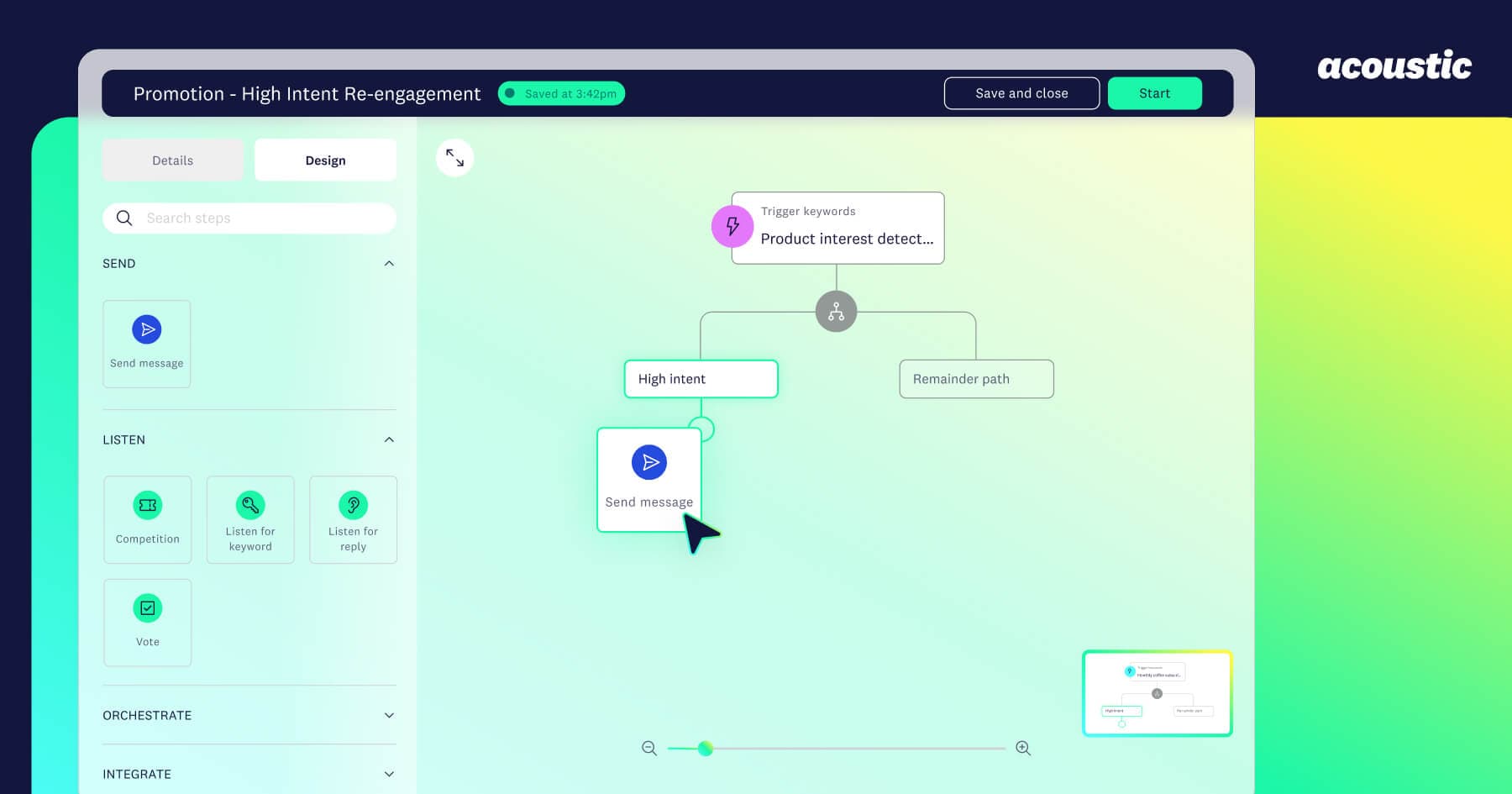Customer expectations have changed and your marketing strategy needs to keep up. Today’s buyers move unpredictably across channels, devices, and touchpoints, making traditional campaign planning feel increasingly rigid and outdated. That’s where customer journey orchestration comes in. It’s about designing adaptive, insight-driven journeys that respond to real behavior in real time. But to get it right, you need the right tools, a smart strategy, clear planning, and thoughtful implementation.
To make journey orchestration work at scale, marketers need to align cross-functional teams, set measurable goals, and prioritize the journeys that drive impact. Here’s how to do it effectively.
Focus on the journeys that matter most
Not every journey needs orchestration on day one, and the key is to start where it counts. To choose the journeys that will be most impactful, ask yourself:
-
Which journeys directly tie to your business goals?
-
Where are the high-friction or high-drop-off moments?
-
Which touchpoints see the most volume or customer value?
Some high-impact starting points include:
-
Acquisition journeys: Lead capture through qualification and handoff
-
Onboarding flows: First purchase, first login, or initial product adoption
-
Retention journeys: Loyalty program engagement or subscription renewal
-
Churn-risk triggers: Drop-offs during trial periods or inactive user signals
Prioritizing these flows ensures early wins and makes it easier to build momentum.
Get cross-functional buy-in
Journey orchestration isn’t just marketing’s responsibility. It touches sales, product, customer success, and even support.
Here’s what collaboration looks like:
-
Marketing: Sets campaign strategy and creative execution
-
Sales: Contributes lead status updates and ideal touchpoints for outreach
-
Product: Shares usage insights and identifies lifecycle milestones
-
Customer success: Flags support triggers and feedback loops
Bringing everyone to the table ensures you’re not optimizing in a silo—and that your orchestration reflects the full customer experience.
Choose tech that can keep up
The right technology doesn’t just automate—it enables. To support JO, your stack should allow for:
-
Real-time triggers that shift as customer behavior changes
-
Unified customer profiles for context that spans devices, platforms, and sessions
-
Flexible journey logic that allow for business rules and AI that adapt to behavior, not just demographics
Implement, test, and scale (in that order)
The best orchestration strategies don’t start big. They start focused.
-
Begin with one or two core journeys
-
Map out behavioral triggers and decision points
-
Test variations (timing, channels, messaging)
-
Measure performance and iterate based on results
Every small success becomes a blueprint for the next rollout.
Measure what matters
Set clear, actionable KPIs for each journey, for example: “Increase lead-to-customer conversion rate by 15%” or “Reduce trial-user churn by 20%.” Tying journey success to business outcomes ensures that orchestration stays aligned with growth—not just activity.
Conclusion
Orchestration isn’t just about automating touchpoints. It’s about thinking strategically, identifying where you can create value, building the right infrastructure, and scaling thoughtfully.
When planning and execution align, journey orchestration becomes more than just a tactic. It becomes your blueprint for meaningful, adaptive customer experiences. To learn more about how to create journeys that adapt to customer needs, download our book, A marketer's guide to customer journey orchestration.
